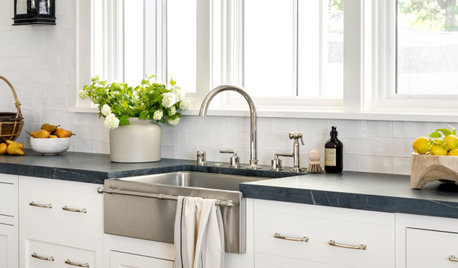Getting Started With 1-1-1 Gritty Mix FAQ
Haname
11 years ago
Related Stories

KITCHEN DESIGN8 Kitchen Sink Materials to Consider
Learn the pros and cons of these common choices for kitchen sinks
Full Story
ARTNew Digital Art Frame Gets Put to the Test
Our writer sets up the EO1 at home, then invites artist friends over for a look — at images of their own work. See what they have to say
Full Story
GREAT HOME PROJECTSConsidering Wallpaper? Here's How to Get Started
New project for a new year: Give your room a whole new look with the color, pattern and texture of a wall covering
Full Story
HOUSEPLANTSHow to Grow Orchids Indoors
Orchids are the exotic aristocrats of the flower world and can make themselves comfortable in almost any home
Full Story
GARDENING GUIDES6 Steps to Get a Garden Off to a Glowing Start
Grow a lush, balanced garden from an empty patch of yard or neglected landscape spot with these easy-to-follow guidelines
Full Story
DECORATING GUIDESHow to Decorate When You're Starting Out or Starting Over
No need to feel overwhelmed. Our step-by-step decorating guide can help you put together a home look you'll love
Full Story
ARCHITECTUREDesign Practice: How to Start Your Architecture Business
Pro to pro: Get your architecture or design practice out of your daydreams and into reality with these initial moves
Full Story
DECORATING GUIDESDecorating 101: How to Start a Decorating Project
Before you grab that first paint chip, figure out your needs, your decorating style and what to get rid of
Full Story
GARDENING AND LANDSCAPINGNew This Week: 3 Fire Pits Herald the Start of Summer
Toast summer — and marshmallows — with these sizzling fire pit designs recently uploaded to Houzz
Full Story
HOUZZ TOURS13 Character-Filled Homes Between 1,000 and 1,500 Square Feet
See how homeowners have channeled their creativity into homes that are bright, inviting and one of a kind
Full Story







edweather USDA 9a, HZ 9, Sunset 28
penfold2
Related Professionals
New Bedford Landscape Architects & Landscape Designers · Braintree Landscape Contractors · Estelle Landscape Contractors · Parkland Landscape Contractors · Ponte Vedra Beach Landscape Contractors · San Rafael Landscape Contractors · Forest Hill Landscape Contractors · Carson Solar Energy Systems · Eden Prairie Solar Energy Systems · Roselle Park Window Contractors · Alhambra Fence Contractors · Markham Fence Contractors · Monrovia Fence Contractors · Thousand Oaks Fence Contractors · Nipomo Fence Contractorspenfold2
HanameOriginal Author
penfold2
HanameOriginal Author
howelbama
HanameOriginal Author
howelbama
penfold2
HanameOriginal Author
howelbama
lathyrus_odoratus
HanameOriginal Author
howelbama
greenman28 NorCal 7b/8a
HanameOriginal Author